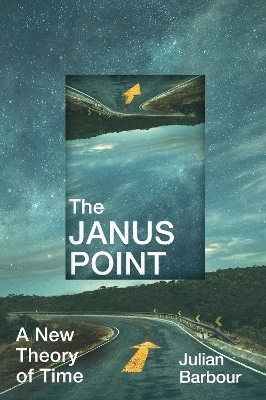
The Janus Point
A New Theory of Time
Seiten
2020
The Bodley Head Ltd (Verlag)
978-1-84792-473-5 (ISBN)
The Bodley Head Ltd (Verlag)
978-1-84792-473-5 (ISBN)
The first is that the most common explanation for time – entropy – is flawed: firstly, because we have no way of explaining how the concentration of energy that would allow the Big Bang to take place came about, and secondly because none of our understanding of entropy takes into account the fact that the universe is infinitely expanding.
In The Janus Point renowned physicist Julian Barbour presents a major new solution to one of the most profound questions in physics - what is time? - with ground-breaking implications for the origin and destiny of our universe.
'Both a work of literature and a masterpiece of scientific thought' Lee Smolin
Time is perhaps the greatest mystery in physics. Despite the fact that the fundamental laws of physics don't distinguish between past and future, we do. And so, for over a century, the greatest minds have sought to understand why time seems to flow in one direction, ever forward. In The Janus Point, Julian Barbour, author of the classic The End of Time, offers a radically new answer: it doesn't.
Most physicists believe that the second law of thermodynamics, and the increase of disorder that it describes, forces an irreversible, unidirectional flow of time. Barbour shows why that argument fails and demonstrates instead that our universe isn't heading for disorder; rather, it emerged from it. At the heart of his argument is a new vision of the Big Bang that Barbour calls the Janus Point, from which time flows in two directions, its currents driven by the expansion of the universe and the growth of order in the galaxies, planets, and life itself.
Monumental in vision and scope, The Janus Point is not just a new theory of time: it's a hopeful argument about the destiny of our universe. While most physicists predict that the universe will become mired in disorder, Barbour sees the possibility that order - the stuff of life - can grow without bound.
In The Janus Point renowned physicist Julian Barbour presents a major new solution to one of the most profound questions in physics - what is time? - with ground-breaking implications for the origin and destiny of our universe.
'Both a work of literature and a masterpiece of scientific thought' Lee Smolin
Time is perhaps the greatest mystery in physics. Despite the fact that the fundamental laws of physics don't distinguish between past and future, we do. And so, for over a century, the greatest minds have sought to understand why time seems to flow in one direction, ever forward. In The Janus Point, Julian Barbour, author of the classic The End of Time, offers a radically new answer: it doesn't.
Most physicists believe that the second law of thermodynamics, and the increase of disorder that it describes, forces an irreversible, unidirectional flow of time. Barbour shows why that argument fails and demonstrates instead that our universe isn't heading for disorder; rather, it emerged from it. At the heart of his argument is a new vision of the Big Bang that Barbour calls the Janus Point, from which time flows in two directions, its currents driven by the expansion of the universe and the growth of order in the galaxies, planets, and life itself.
Monumental in vision and scope, The Janus Point is not just a new theory of time: it's a hopeful argument about the destiny of our universe. While most physicists predict that the universe will become mired in disorder, Barbour sees the possibility that order - the stuff of life - can grow without bound.
Julian Barbour is a former Visiting Professor in Physics at the University of Oxford and author of the highly regarded The Discovery of Dynamics and the bestseller The End of Time. His papers have been published in the world's most prestigious scientific journals, including Nature, Proceedings of the Royal Society and Physical Review Letters and he has made numerous appearances on national radio, television and in various documentaries. The Janus Point is his first book in twenty years and the culmination of five decades' work.
| Erscheinungsdatum | 09.03.2019 |
|---|---|
| Verlagsort | London |
| Sprache | englisch |
| Maße | 154 x 233 mm |
| Gewicht | 491 g |
| Themenwelt | Geschichte ► Hilfswissenschaften ► Chronologie |
| Mathematik / Informatik ► Mathematik ► Angewandte Mathematik | |
| Naturwissenschaften ► Physik / Astronomie ► Astronomie / Astrophysik | |
| ISBN-10 | 1-84792-473-5 / 1847924735 |
| ISBN-13 | 978-1-84792-473-5 / 9781847924735 |
| Zustand | Neuware |
| Haben Sie eine Frage zum Produkt? |
Mehr entdecken
aus dem Bereich
aus dem Bereich
Buch | Hardcover (2012)
Westermann Schulbuchverlag
CHF 44,90
Schulbuch Klassen 7/8 (G9)
Buch | Hardcover (2015)
Klett (Verlag)
CHF 29,90
Buch | Softcover (2004)
Cornelsen Verlag
CHF 23,90


